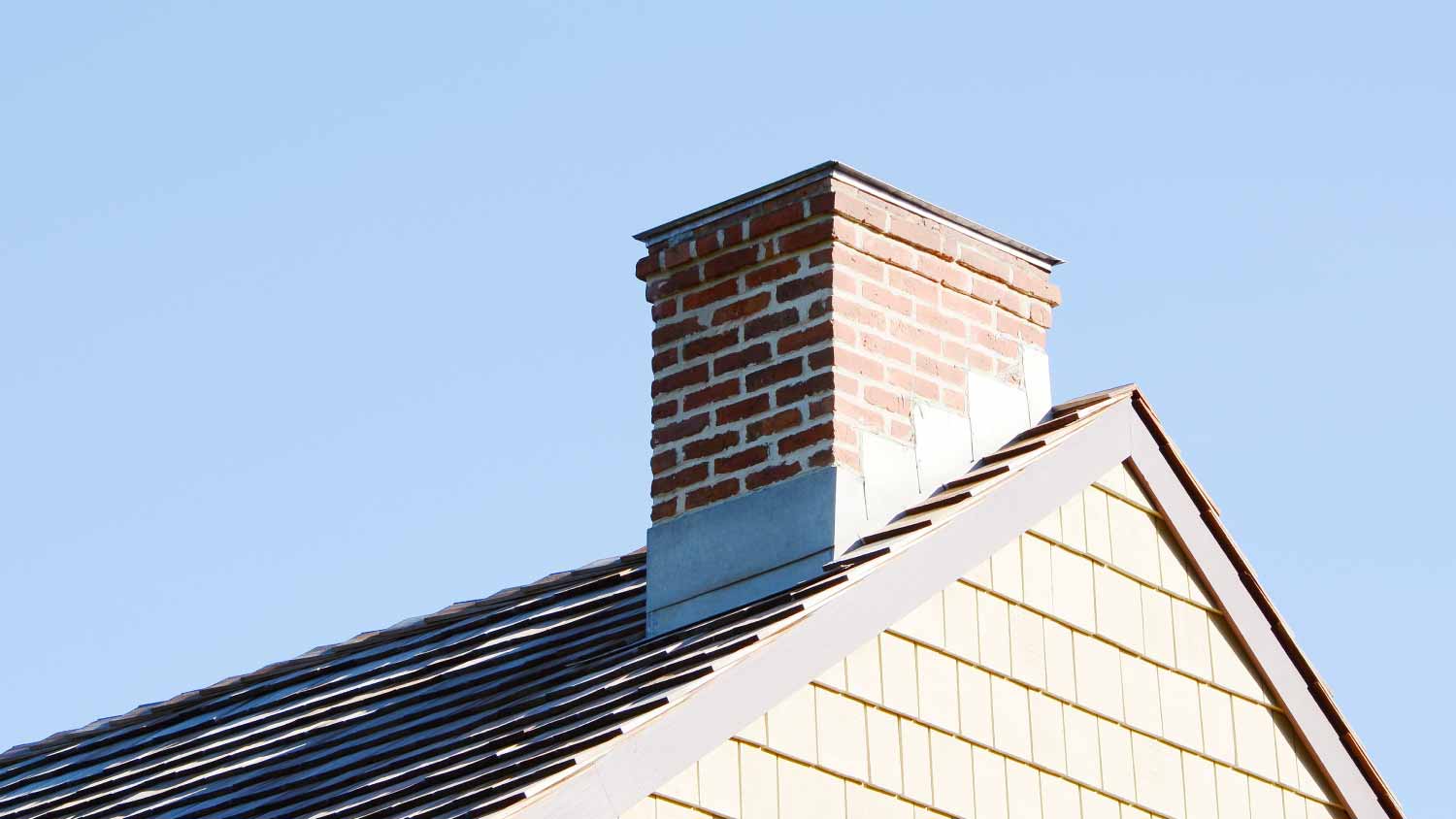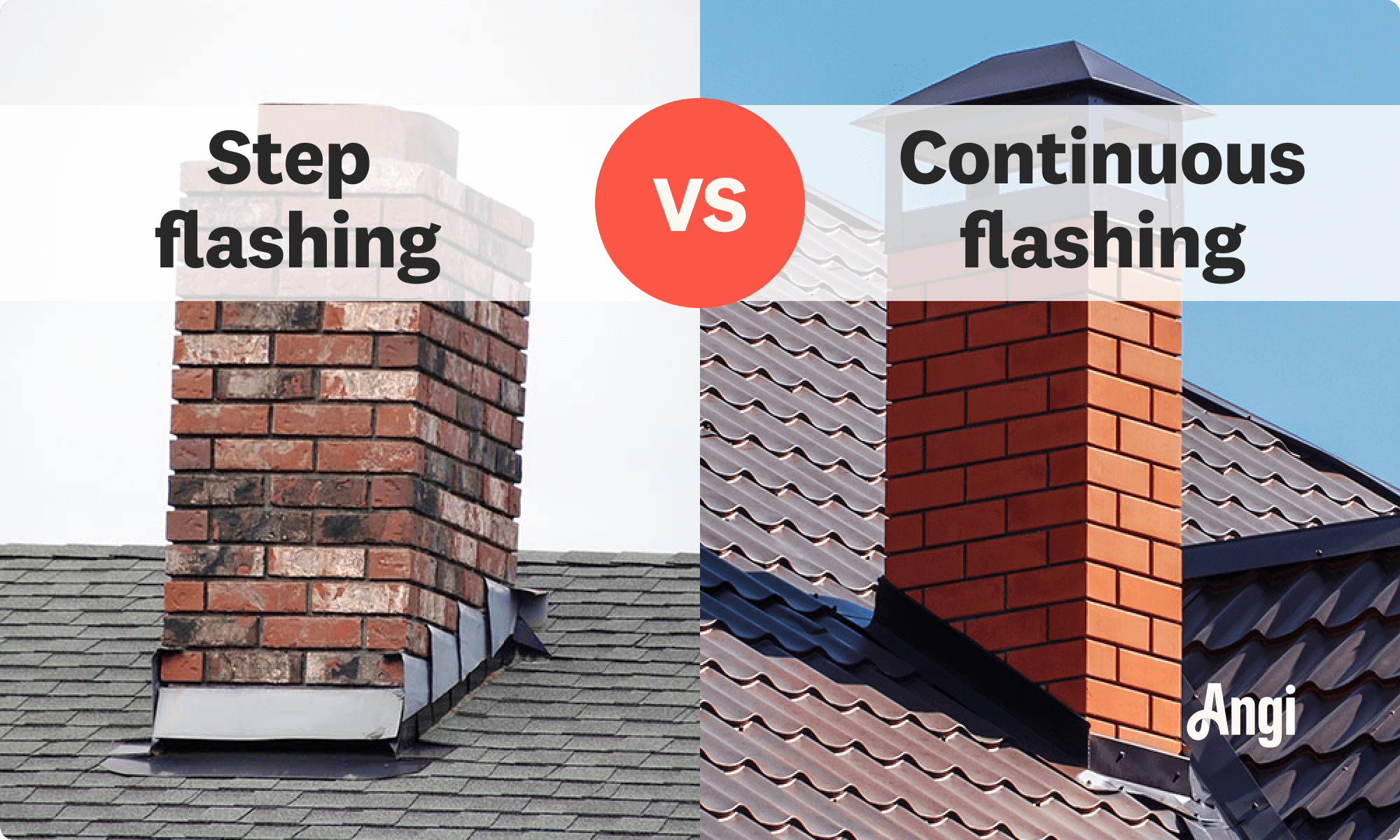
Dealing with a visibly damaged roof or leak? Learn about roof repair costs in Columbus to see how much you’ll need to budget for a permanent solution.
Chimney flashing is the unsung hero of your cozy nights by the fireplace


Chimney flashing is the metal barrier around the base of a chimney where it meets a roof.
Chimney flashing has two main pieces: base flashing and counter flashing.
Flashing is made of aluminum, steel, or copper.
Flashing can leak and cause water damage to surrounding areas, so it’s important to have it inspected.
The last thing you want as you curl up by the fire is a leak raining on your parade. Chimney flashing is a crucial component that keeps rain, snow, and other outside moisture from seeping into the vulnerable space where your chimney meets your roof and causing water damage. But what is chimney flashing? We’ve laid out the basics here so you can feel confident that you understand this part of the chimney.
Chimney flashing is the metal sheet or sheets around the base of a chimney where it meets the roof. It’s designed to create a waterproof seal between the chimney and the roof and prevent water damage.

Chimney flashing is made up of two components: base flashing and counter flashing.
Base flashing is an L-shaped piece of metal installed right at the joint where the roof meets the chimney. It extends up the vertical wall of the chimney and out to the roof shingles.
Counter flashing goes over the top of the base flashing, like a cap. It’s installed in the chimney mortar and overlaps with the base flashing to create a waterproof barrier.
When the flashing is installed as one long straight piece, it’s called apron—or continuous— flashing. On chimneys, you’ll often see step flashing, a series of overlapping plates installed in a staircase fashion along the roof's angle.

Roof flashing is made of metal, but you have some options:
Aluminum
Aluminum is a popular material for roof flashing. It’s lightweight and low-cost, though it’s not the most durable. It’s especially susceptible to corrosion when exposed to salt air, so it’s not the best option for coastal areas.
Steel
Galvanized steel is another common and inexpensive flashing material. Despite its cost, it’s highly durable, making it one of the most popular choices. Keep in mind that it can corrode over time.
Copper
Copper is long-lasting, and many people love the look of it—it eventually develops that classic green patina. But it’s much more expensive than aluminum or steel.
Lead
Lead is soft and flexible, making it easy to shape into flashing, especially around unusual shapes. But like copper, it’s expensive. Due to environmental and health concerns, it’s not used much anymore.
It’s important to maintain your chimney flashing and keep it in good condition. It can take quite a beating depending on the weather where you live, and it’s essential that it stays waterproof to prevent greater damage like mold, mildew, and other water damage. Here are some things you can do to help your roof last:
Regular inspections: Inspect your chimney flashing periodically (and carefully) for signs of damage like leaks, cracks, or rust, especially at the change of seasons or after hard storms. It’s also good to have your whole roof inspected by a local roofing professional every few years since a pro can notice things you might not.
Keep it clean: Just like you clean your gutters, you should clean around the chimney. Debris like leaves, dirt, or even animal nests can block the flow of water and lead to damage. Because it can be dangerous to go on the roof, rely on a local chimney cleaner for this task.
Repair quickly: If you do find damage to your chimney flashing, make sure you repair it quickly. Small problems can quickly snowball when left unchecked. Some issues, like small gaps or leaks, can be fixed with a sealant or caulk, which you may be able to do yourself.
You can check for internal and external signs. Externally, look for changes in the flashing, like rust or warping, as well as the area around it. Wet, loose, or damaged roof shingles can be a sign that something is wrong with your flashing. You should also check for cracks and discoloration in the chimney's masonry. White, chalky stains (efflorescence) on the bricks or stone indicate leaks.
Look for signs of water damage on the inside of your home as well. Water stains, peeling paint, damp walls, or visibly dripping water around your fireplace indicate an issue. And remember to follow your nose—a musty smell around your fireplace or in your attic around the chimney is a sign of mold caused by moisture.
From average costs to expert advice, get all the answers you need to get your job done.

Dealing with a visibly damaged roof or leak? Learn about roof repair costs in Columbus to see how much you’ll need to budget for a permanent solution.

Learn about roof replacement costs in Columbus and what factors are at play to budget accurately and make sure you’re getting a fair price.

A metal roof can defend your home against Ohio’s varying weather conditions. Learn how much a metal roof costs in Columbus, OH.

Are you trying to pick a soffit and fascia material for your roof? Here are 10 options for the right finishing touch on your house.

Know the different pros and cons of different types of asphalt shingles, including three-tab, architectural, and luxury shingles.

Discover how to install metal roofing over shingles to add long-lasting weather protection to your existing roof without removing the old material.